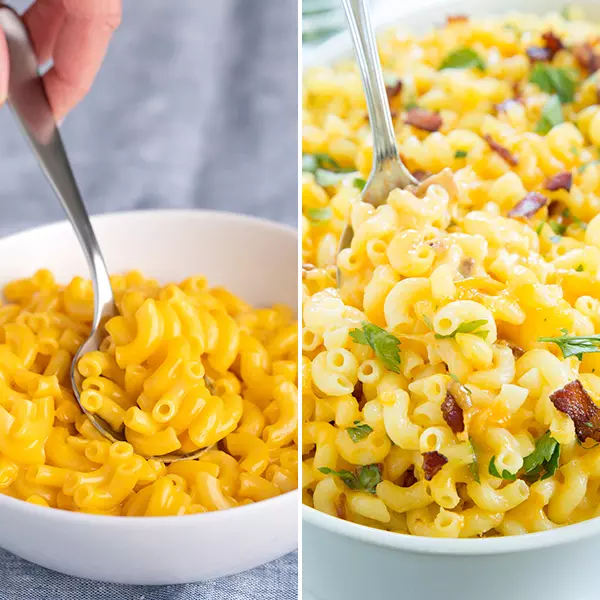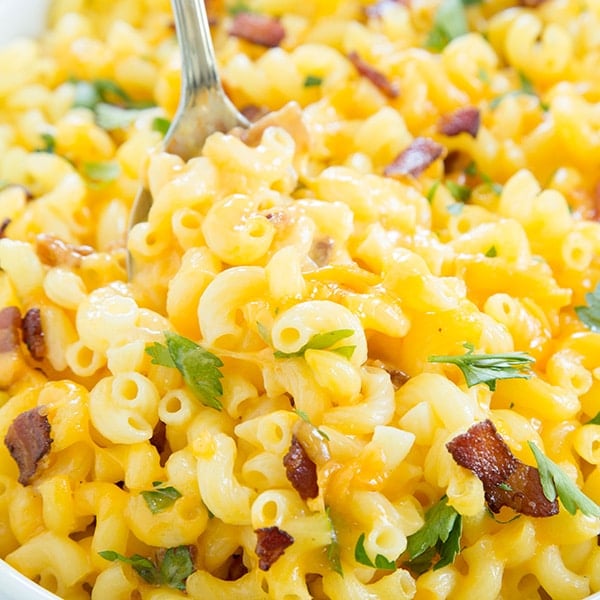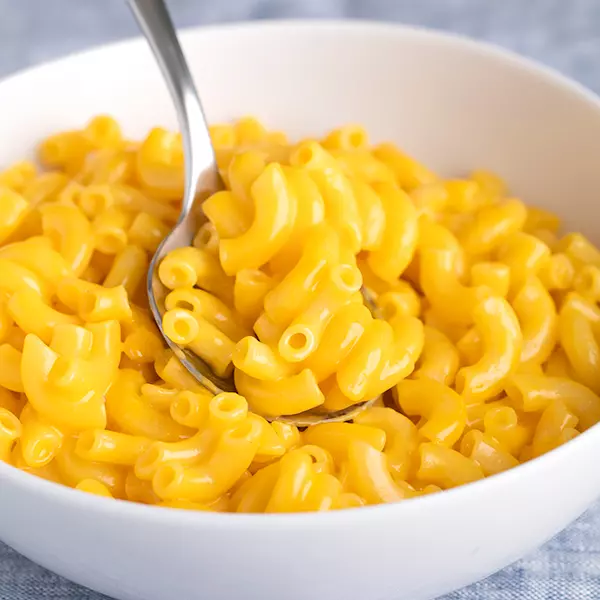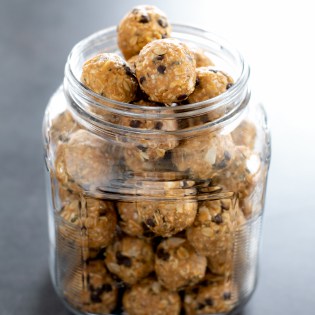Welcome, gluten free foodies! If there’s one dish that brings comfort like no other, it’s a hot, creamy, bubbling bowl of gluten free mac and cheese. But deciding on a version that’s both delicious and gluten free can seem impossible.
Gluten free mac and cheese is a go-to weekly recipe in my house. My personal favorite is my classic baked gluten free mac and cheese recipe. We’ll get to that in just a little bit.
I’ve also got an excellent stove-top version that you can make one of a few ways. And then there’s the easy slow cooker recipe that’s almost entirely hands-off.
A really good, simple homemade gluten free mac and cheese is a thing of beauty. And if you follow any of my recipes, you’ll get an amazing crowd-pleasing dish, whichever one you choose.
Let’s take a look at the best recipes you’ll find for gluten free mac, ways you can make them more interesting, and finally potential problems you might encounter along the way, plus my suggested solutions.
Understanding Gluten Free Ingredients
Before you can master your gluten free mac and cheese recipe, you need to understand the gluten free ingredients involved. Gluten free macaroni pasta is a must, and it’s widely available in supermarkets and online.
It can be made from a variety of grains, including corn, rice, and quinoa. For the most readily available, solid gluten free macaroni brand, I recommend Barilla elbow pasta. It cooks well without getting hard and holds the cheese sauce well.
Most types of cheese are naturally gluten free. However, it’s crucial to read labels for hidden gluten, especially in pre-shredded cheeses which may use anti-caking agents that contain gluten.
Making the Perfect Gluten Free Mac and Cheese
Achieving perfectly cooked gluten free pasta is a skill, but with a few tips, you can master it. Begin by boiling your pasta in plenty of water and keep an eye on it. Remove it from the heat while it’s al dente and then rinse it in warm water right away to stop the cooking process and avoid soggy pasta that falls apart.
A creamy cheese sauce is the heart of your gluten free macaroni and cheese recipe. I mostly use a sharp cheddar for its strong, tangy flavor.
Evaporated milk gives that extra creamy goodness and just can’t be beaten by cream or whole milk. Stick with the evaporated milk!
The best gluten free mac and cheese recipes
Here are my absolute favorite recipes for gluten free mac and cheese. The ones I go back to again and again. And they’re reader favorites, too. I’ve tweaked these to perfection, tried lots of different variations, and these are the ones that stand the test of time.
This casserole-style gluten free mac and cheese recipe is made with eggs, evaporated milk, sharp cheddar, Barilla elbow pasta, butter, salt, and bacon (optional). Simple ingredients, easy-to-follow recipe, and a comforting, indulgent cheesy dinner.
Troubleshooting Common Problems
Even the most seasoned cooks can run into problems when tackling a new dish. Even easy gluten free mac recipes. So let’s take a look at common problems you might run into and how to fix them.
Problem: Gluten free pasta is too soft.
Gluten free pasta can sometimes become overly soft if it’s cooked for too long. To prevent this, it’s important to cook your pasta only until it’s al dente, which means it should still have a slight firmness to it.
Follow the instructions on the package for the cooking time, but start checking for doneness a minute or two before the suggested time. Once the pasta is cooked to your desired texture, immediately drain it and rinse it with warm water to stop any further cooking.

Problem: Cheese sauce not creamy enough.
If your cheese sauce isn’t as creamy as you’d like, the solution is to use a combination of cheeses for the best results. A mix of a flavorful cheese, such as sharp cheddar cheese, and a creamy, melting cheese, such as Monterey Jack, or Kraft cheese slices (depending on the recipe you’re following). This can help achieve the desired creaminess and enhance the overall flavor.
Experiment with different cheese combinations to find the perfect balance for your taste. Additionally, make sure to melt the cheeses slowly over low heat, stirring constantly until they are fully melted and blended with the other ingredients. This will help create a smooth and creamy cheese sauce.
Problem: Gluten free mac and cheese drying out when baked.
Gluten free mac and cheese can sometimes become dry when baked, as gluten free pasta tends to absorb more liquid. To ensure your mac and cheese stays moist and creamy, it’s important to start with an extra creamy cheese sauce before baking. This can be achieved by making a slightly looser sauce than usual or adding a bit more milk or cream to the recipe.
The brand of pasta you use and your specific oven can impact how dry your dish is, so experiment and keep checking it while it’s baking.
If you’re struggling with dryness, you can cover the baking dish with foil for the first part of the baking time. This helps to trap moisture and prevent the top from drying out. Towards the end of the baking time, remove the foil to allow the top to brown and develop a crispy texture.
Problem: The dish is too bland
This often occurs when the cheese used is too mild. The solution is to use a sharper, more flavorful cheese. Experiment with different types of cheese to find one that suits your taste.
Some cheeses that are both melt-able and flavorful include sharp cheddar, Gruyère, and Parmesan. And, of course, you can some of your favorite spices and herbs to amp up the flavor profile.

Problem: The sauce is grainy
This could be due to overheating the cheese or melting it too quickly. To solve this, make sure the sauce is warm, not hot, when you add the cheese. Add the cheese gradually, stirring constantly until it’s fully melted before adding more.
Exciting add-ins and variations
Gluten free macaroni and cheese serves as a versatile canvas for creativity, allowing you to personalize and elevate your dish with exciting add-ins and variations. Here are some ideas to inspire you and take your gluten free mac and cheese to new heights:
Vegetable medley: Add a colorful array of sautéed vegetables to your mac and cheese. Consider options like roasted broccoli, caramelized onions, bell peppers, or spinach to add vibrant flavors and textures.
Protein power: Enhance your mac and cheese by incorporating protein-rich ingredients. Diced ham, shredded chicken, or seasoned ground beef can take your dish from a side to a satisfying main course.
Spice it up: Infuse your mac and cheese with a kick of spice. Add diced jalapeños, chipotle peppers in adobo sauce, or a sprinkle of cayenne pepper to give it a spicy twist. The heat will complement the creaminess of the cheese sauce.
Herbs and seasonings: Experiment with different herbs and seasonings to add depth and complexity to your mac and cheese. Fresh herbs like parsley, chives, or basil can provide a burst of freshness, while spices like paprika, garlic powder, or mustard powder can enhance the overall flavor.
Crunchy toppings: Elevate the texture of your mac and cheese by adding crunchy toppings. Consider a generous sprinkle of gluten free breadcrumbs, crushed potato chips, or crispy bacon bits.
Cheese variations: Play with different cheese combinations to create unique flavor profiles. Experiment with a blend of sharp cheddar or smoked Gouda. Each cheese brings its distinct flavor and texture, allowing you to customize your mac and cheese to your preferences.
Gluten free pasta varieties: Explore the world of gluten free pasta and try different varieties to bring a new dimension to your mac and cheese. Swap traditional elbow macaroni with gluten free penne, fusilli, or shells. Each pasta shape adds a unique twist and can hold the cheese sauce in different ways.
International inspiration: Draw inspiration from cuisines around the world to create interesting variations of mac and cheese. Incorporate flavors such as Mexican-inspired spices and salsa, Italian-inspired sun-dried tomatoes and basil, or Mediterranean-inspired feta cheese and olives.
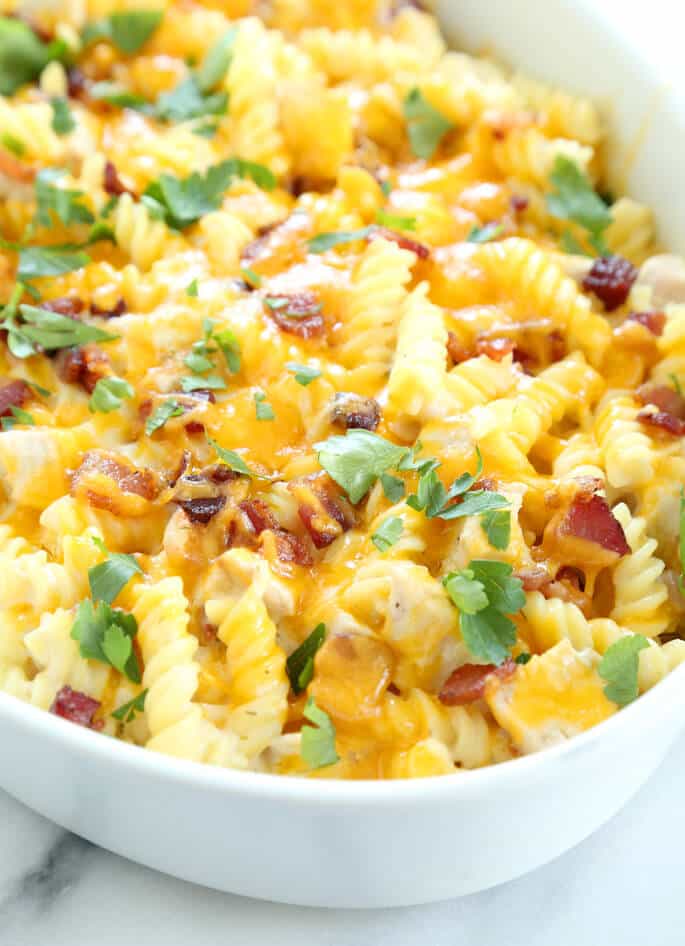
FAQs
What types of gluten free pasta can I use for macaroni and cheese?
There are many types of gluten free pasta available, including ones made from corn, rice, quinoa, lentils, or a blend of these. You can choose whichever type you prefer, but shapes like elbows, shells, or rotini are popular for mac and cheese.
I like Barilla elbow pasta for any of these gluten free recipes as it cooks well and holds the sauce, and its shape and structure, nicely. A newer brand of gluten free pasta that I also love is Rummo, which I order online. Be sure you’re buying their gluten free variety, though!
Can I use any type of gluten free flour to make the cheese sauce?
No, to make the roux for the cheese sauce, you need to use a gluten free flour blend that does not have xanthan gum, like our basic gum-free gluten free flour blend, or an appropriate single gluten free flour like superfine sweet white rice flour or superfine white rice flour.
What kinds of cheese work best in gluten free mac and cheese?
The type of cheese you use can greatly affect the flavor of your mac and cheese. Common choices include sharp cheddar cheese, gouda, and Monterey Jack, but you can use any cheese that melts well. You can also use a blend of several cheeses for more complex flavors.
Can I make gluten free mac and cheese in advance?
Yes, you can prepare the casserole-style baked gluten free mac and cheese up to the point of baking and refrigerate it for up to a day in advance. You might need to increase the baking time if you’re starting with a cold dish. Stovetop mac and cheese is best served immediately, but leftovers can be refrigerated and reheated.
How can I add more flavor to my gluten free mac and cheese?
There are many ways to add flavor to mac and cheese. You can mix in ingredients like chopped crisped bacon, sautéed onions, roasted garlic, onion powder, jalapeños, or cooked chicken. You can also top the mac and cheese with things like gluten free breadcrumbs, grated cheese, or herbs before baking.
Is all cheese gluten free?
Most cheese is naturally gluten free, but some processed cheeses and pre-shredded cheese may contain additives with gluten. Always check the label, even if it’s a brand of cheese that you’ve purchased before since companies change formulations.
What should I serve with gluten free mac and cheese?
Mac and cheese can be a meal on its own, but it can also be served as a side dish. It pairs well with things like grilled chicken, steak, or vegetables. For a lighter meal, pair it with a fresh salad.
